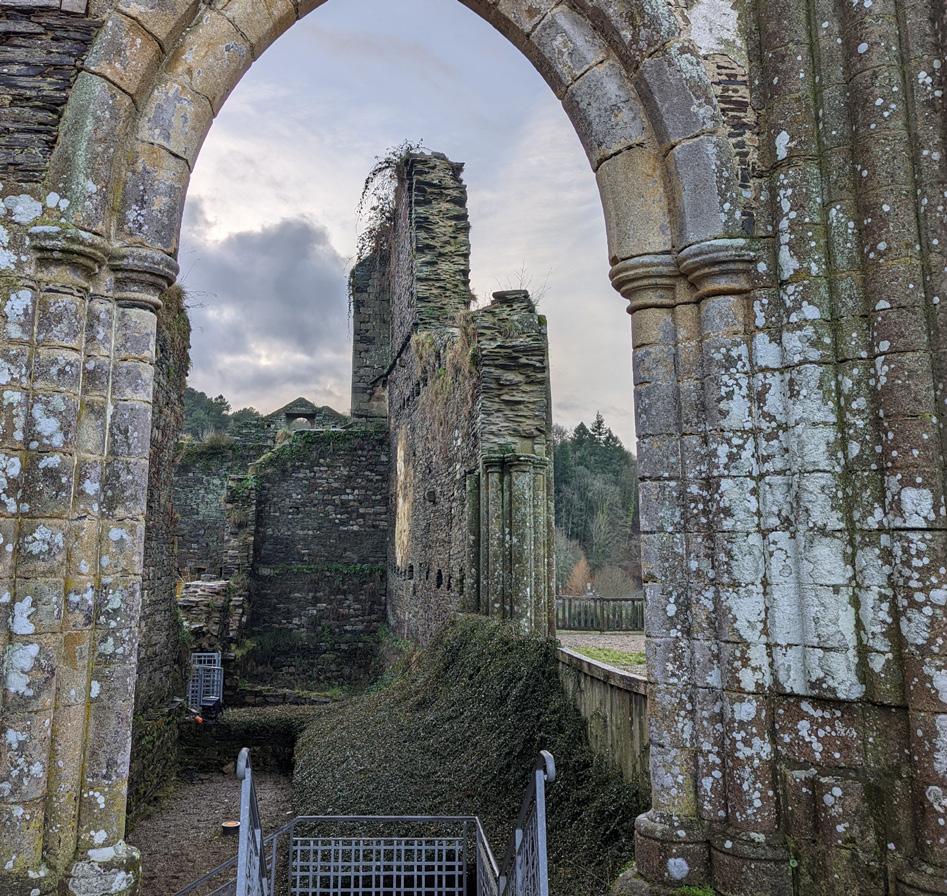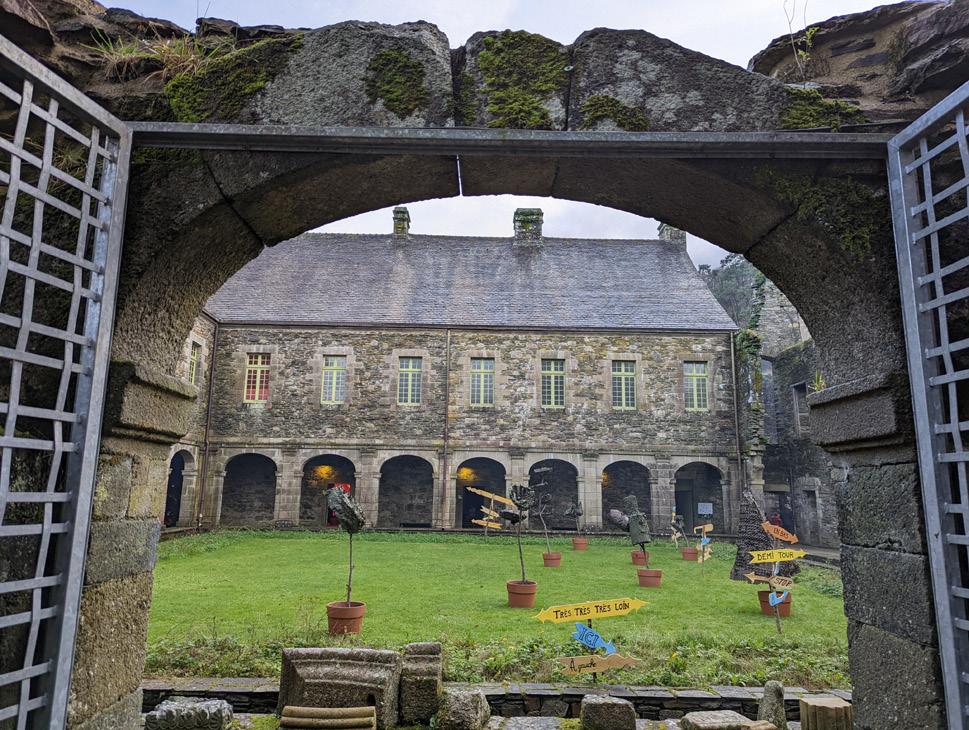
3 minute read
BON REPOS
The abbey that draws fans like a rock concert
There I am, walking down a hillside on a chilly afternoon, under a grey foreboding sky in a sparsely-populated corner of central Brittany, headed in the direction of the ancient Abbey of Bon Repos [L’Abbaye de Bon Repos]. It was after Christmas and prior to New Year’s Day, a period when I figured I’d practically have the place to myself.
Advertisement
But it felt like I was going to a rock concert. I was following a crowd down the hillside to the abbey. Behind me, the parking lot was filling up. But why?
I think it is because the story of the Abbey of Bon Repos has everything: A vision in which instructions are given by the Virgin Mary, the founding of an abbey which achieved astonishing prosperity, decline and abandonment over more than a century (almost to the point of ruin), then a miraculous redemption and rediscovery with a return to economic and political glory, followed by restoration and reopening by a group of tireless volunteers, the Association des Compagnons de l’Abbaye de Bon Repos [Loosely translated, ‘Friends of the Abbey of Bon Repos’]. Legend tells us that while sleeping near the edge of Quénécan forest, Viscount Alan III de Rohan took a nap, during which he had a dream in which the Virgin told him to construct, at that precise location, the final resting place for the Rohan family. Thus, the name, ‘Bon Repos’ [‘Good Rest’]. I wouldn’t reject out-of-hand the possibility that the viscount had a vision. Quénécan forest is very popular with wild mushroom collectors.
On June 23rd 1124, the Viscount Rohan and his wife Constance, the Duchess of Brittany, issued the ‘deed of foundation’ of the abbey. An abbot of the Cistercian monastic order and twelve monks were given possession of the property and went to work creating a successful abbey.
The Cistercians were selected because of their success in turning forests into highly-productive fields and it was a wise selection indeed. The abbey was remarkably prosperous. In fact, there was so much profitable work to be done, that the order ran out of monks and laymen were invited to work at the abbey. But this was all undone after Duchess Anne of Brittany married the King of France, Charles VIII, making the abbey royal property and bringing with it mismanagement and decline.


This is some of what remains of the southern transept of the ancient
church that was once part of the Abbey of Bon Repos.

However, the fate of the Abbey of Bon Repos, took another turn, a happier one, in 1683 when a new abbot, Philippe Alexandre Montault Navaille de Saint-Geniès, arrived. He was determined to turn it into his own, incredibly luxurious palace, which he did. It is said that the monks were not permitted to enter the ‘palace’ of the abbot, lest they be corrupted by its splendour. But the roller-coaster history of the Abbey of Bon Repos was not over.
The French Revolution in 1791 put an end to the abbey. The government took ownership of all religious property and the abbey was sold. It was used by a few private owners after that but was then abandoned for more than 150 years. A forest grew within the walls. The tree tops were higher than the rooftops that were there before.

In 1986, a group was formed to restore the lost glory of the abbey, the Association des Compagnons de l’Abbaye de Bon Repos. With the aid of many grants and contributions, the association restored much of the abbey and prepared it for visitors. The group now sponsors a wide variety of cultural events within the walls of the abbey, including exhibitions by visiting artists, musical performances and special events for school children. When I visited in December, there was an exhibition of art inspired by the characters in ‘Alice in Wonderland’. The presentation, ‘In the Footsteps of Alice’, was created by the architect and illustrator Dominique Richard.
The Abbey of Bon Repos has a highly informative website, with both English and French versions, that includes a detailed map showing how to get there: WWW.BON-REPOS.COM
Reg Crowder











